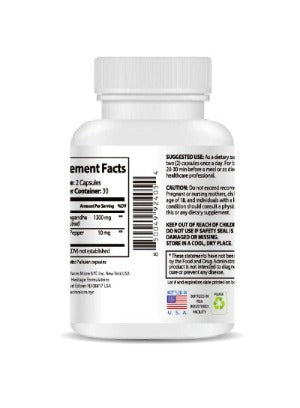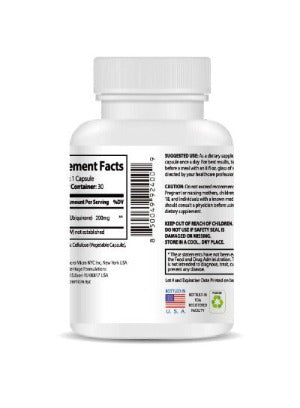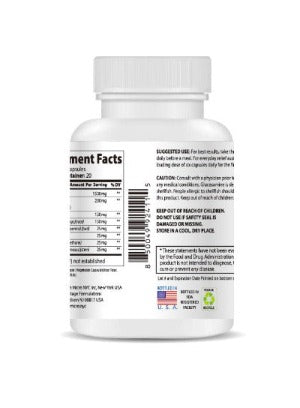In today’s digital world, our eyes are constantly on overdrive. From the moment we wake up to check our phones to late-night binge-watching sessions, our screen time has exploded. This constant exposure has led to an alarming rise in common eye conditions, and two of the most frequent and frustrating complaints are dry eyes and floaters. If you're experiencing both, you're not alone. This guide is your comprehensive roadmap to understanding these conditions and, most importantly, learning how to take control of your eye health.
The Screen Time Epidemic: Why Our Eyes Are Struggling
Think about the last time you consciously thought about blinking. Chances are, it's not a frequent thought. When we’re focused on a screen—whether it’s for work, entertainment, or doomscrolling—our blink rate can drop by as much as 60%. Instead of the natural 15-20 blinks per minute, we might only blink 5-7 times.
This seemingly small change has a massive impact. Each blink is essential for replenishing our tear film, the thin layer of fluid that coats the surface of our eyes. This tear film does more than just keep our eyes wet; it provides oxygen to the cornea, washes away debris, and protects against infection. When we don't blink enough, this tear film evaporates, leading to the classic symptoms of dry eye syndrome: a gritty, scratchy feeling, redness, and a burning sensation. It can feel like you have sand in your eyes.
Adding to this, the blue light emitted from our screens can cause eye strain and fatigue, making a bad situation even worse. The muscles around our eyes are constantly working to focus, and over time, this can lead to headaches and blurred vision. The combination of reduced blinking and digital eye strain creates the perfect storm for eye discomfort.
Understanding Floaters: Are They Normal or a Warning Sign?
If you’ve ever seen a tiny speck, squiggly line, or cobweb-like shape drift across your field of vision, you’ve seen a floater. Floaters are essentially microscopic pieces of debris floating in the vitreous humor, the gel-like substance that fills the back of your eye. As we age, this gel can liquefy and shrink, causing tiny clumps of protein or tissue to detach and cast shadows on the retina.
For most people, floaters are a completely normal part of the aging process. They are more noticeable when looking at a bright, plain surface like a white wall or a clear blue sky. While they can be annoying, they are generally harmless and don't require treatment.
However, a sudden increase in the number of floaters, especially if accompanied by flashes of light or a loss of peripheral vision, can be a sign of a more serious condition, such as a retinal tear or detachment. This is a medical emergency that requires immediate attention. It's crucial to understand the difference: a few occasional floaters are usually fine, but a sudden “shower” of them is a red flag.
The Connection Between Dry Eyes and Floaters
While dry eyes and floaters are different conditions, they are often linked by the same root cause: the stress we place on our eyes. Chronic eye strain from digital devices, a lack of essential nutrients, and poor circulation can contribute to both issues.
-
Circulation and Nutrient Deprivation: Our eyes, like any other part of our body, need a steady supply of nutrients and oxygen. Poor circulation can prevent essential vitamins and antioxidants from reaching the eyes, which can compromise the health of the vitreous humor and the tear glands. This can exacerbate both the dry eye condition and the formation of floaters.
-
Inflammation: Chronic dryness and irritation can lead to low-level inflammation in the eye. While not a direct cause of floaters, inflammation can worsen eye health and make the eyes more susceptible to age-related changes, potentially leading to more noticeable floaters.
Your Screen Survival Guide: Practical Steps for Healthier Eyes
Managing both dry eyes and floaters requires a holistic approach that goes beyond just using eye drops. It's about changing your habits and providing your eyes with the support they need to thrive in a digital world.
Step 1: Optimize Your Screen Habits
The single most effective way to reduce digital eye strain is to modify how you use your screens.
-
The 20-20-20 Rule: This is the gold standard for screen users. Every 20 minutes, look at something 20 feet away for at least 20 seconds. This simple act relaxes your eye muscles and helps reset your blink rate.
-
Adjust Your Screen: Position your monitor at arm's length, with the top of the screen at or slightly below eye level. This prevents you from staring upward, which can widen your eyes and increase tear evaporation.
-
Use Proper Lighting: Avoid glare by positioning your screen away from windows and overhead lights. Use a desk lamp to illuminate your workspace, but don't place it in a way that creates a reflection on your screen.
-
Increase Text Size: Make your text larger to avoid squinting and reduce eye strain.
Step 2: Hydrate and Nourish Your Body
Eye health starts from within. What you eat and drink has a direct impact on the quality of your tears and the health of your eyes.
-
Stay Hydrated: Drink plenty of water throughout the day. Dehydration can affect your tear production and worsen dry eye symptoms.
-
Eat Eye-Healthy Foods: Incorporate foods rich in Omega-3 fatty acids (salmon, walnuts, chia seeds), Vitamin A (carrots, sweet potatoes), and antioxidants (leafy greens, berries) into your diet. These nutrients are vital for maintaining the health of your retina and tear glands.
Step 3: Use Targeted, Natural Solutions
While lifestyle changes are crucial, sometimes your eyes need a little extra help. For those seeking a deeper, more restorative solution, consider products that leverage the power of natural ingredients.
Many over-the-counter options, like traditional eye drops, offer temporary relief by providing a thin layer of lubrication. However, they don't address the root cause of the problem, and frequent use can lead to dependency. For those who want to actively nourish their eyes from the inside out, there's a different kind of approach.
The Wise Quest Soothing Eye Patches are an example of an innovative solution that harnesses natural ingredients. Unlike standard eye drops, these patches use a transdermal absorption technology to deliver a potent blend of natural extracts directly to the delicate tissues around the eyes. The key ingredients are:
-
Chrysanthemum (菊花): Known in traditional Chinese medicine for its cooling and anti-inflammatory properties, chrysanthemum is rich in antioxidants that help protect the eye from oxidative stress.
-
Peppermint (薄荷): Peppermint has a soothing and refreshing effect. It helps to calm irritated eyes and promotes circulation, which can aid in the delivery of nutrients.
-
Licorice (甘草): This powerful herb is celebrated for its anti-inflammatory and circulatory benefits. It helps reduce eye strain and fatigue by promoting healthy blood flow to the eyes, ensuring they get the oxygen and nutrients they need.
By using a product that delivers these natural components directly to the eye area, you're not just masking symptoms; you're providing the deep nourishment and repair needed to help restore your eye health. This kind of approach is particularly effective for those who spend more than three hours a day on a screen or wear contact lenses, as it helps to replenish the nutrients that are depleted by these activities. The patches work overnight, allowing the ingredients to penetrate deeply and support the restoration of tear film function, muscle health, and circulation while you sleep.
Step 4: Don't Underestimate the Power of Sleep
Sleep is when our bodies—and our eyes—do most of their repair work. A lack of quality sleep can lead to tired, irritated eyes and can worsen dry eye symptoms. Make sure you get 7-9 hours of restful sleep per night. This is especially important for contact lens wearers, as your eyes need a break from the lens.
When to See a Doctor
While these tips can significantly improve your eye comfort, it's essential to know when to seek professional help. If your dry eye symptoms are severe, don't improve with lifestyle changes, or if you notice a sudden increase in floaters or flashes of light, see an eye care professional immediately. They can provide an accurate diagnosis and rule out any serious underlying conditions.
By taking a proactive, holistic approach to your eye health—one that combines smart screen habits, a nourishing diet, and targeted, natural solutions—you can manage the challenges of the digital age and ensure your eyes stay healthy for years to come. Your eyes are a window to the world; let’s make sure they stay clear.
Your Eye Health Questions Answered
Q1: Can digital screens actually cause floaters?
A1: Digital screens themselves don’t directly cause floaters, which are clumps within the vitreous gel. However, the chronic eye strain and reduced blinking associated with long screen time can lead to poor eye health, inflammation, and reduced circulation. This can contribute to the overall deterioration of eye tissues over time, potentially making you more susceptible to floaters or making them more noticeable. It's more about the cumulative stress on your eyes rather than the screen being a direct cause.
Q2: I've heard that some eye drops have preservatives. Is that bad for my eyes?
A2: Yes, many traditional eye drops contain preservatives to prevent bacterial growth. While they are safe for occasional use, frequent, long-term use of preservative-containing drops can be irritating to the eye's surface and can even worsen dry eye symptoms over time. It's why many eye doctors recommend preservative-free artificial tears for patients who need to use drops more than four times a day. Using solutions that don't rely on preservatives, like those with natural, transdermal delivery, can be a great way to avoid this issue altogether.
Q3: How do natural ingredients like chrysanthemum and licorice help with my eyes?
A3: These ingredients, commonly used in traditional medicine, offer specific benefits. Chrysanthemum is rich in antioxidants that protect eye cells from damage caused by free radicals. This can help reduce inflammation and fatigue. Licorice is known for its anti-inflammatory and circulatory-boosting properties, which help deliver essential nutrients to the eye. Peppermint provides a cooling and soothing effect that can relieve the burning and irritation associated with dry eyes. These natural compounds work together to address the root causes of eye discomfort and support long-term eye health.
Q4: If I already have dry eyes and floaters, is it too late to improve my eye health?
A4: Not at all. While floaters are often permanent, you can significantly improve your quality of life by managing the symptoms and preventing them from getting worse. By adopting the lifestyle changes mentioned in this article—like taking breaks, staying hydrated, and nourishing your eyes with the right supplements or natural solutions—you can reduce your dry eye symptoms and ensure your eyes are as healthy as they can be. Early intervention and consistent care are key.
Q5: Can I wear my contact lenses while using the Wise Quest Soothing Eye Patches?
A5: For best results, it's recommended to remove your contact lenses before applying the patches. This allows the eyes to breathe and ensures the natural ingredients in the patches can be absorbed effectively without any interference from the lenses. The patches are designed for nighttime use, so it's a perfect time to give your eyes a rest from lenses and let the restorative process begin.









